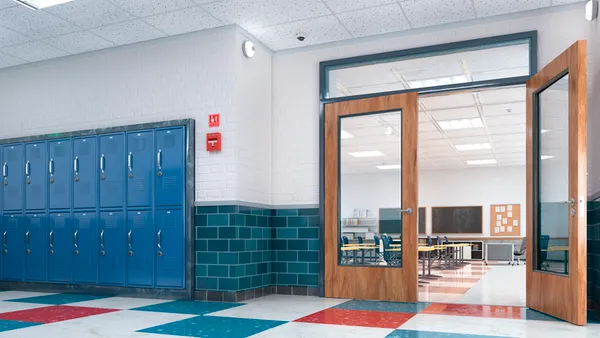Dive Brief:
- Revisions to the U.S. Courts Design Guide, implemented by the judiciary in 2021, are projected to increase courthouse sizes by nearly 6% and construction costs by roughly 12% on average, according to a recent U.S. Government Accountability Office report detailing its analysis of select courthouse projects.
- The U.S. Courts Design Guide governs the design and construction of federal courthouses. The updated standards mark the first major overhaul of the design guide since 2007. The updates include expanding circulation requirements — space allocated for the movement of court staff, prisoners and the public — which judiciary officials have stated are necessary to improve safety and address concerns that the 2007 circulation requirements did not provide enough space.
- “Increases to the size of courthouses are likely to result in increased operations and maintenance costs over the life of those courthouses,” David Marroni, director of physical infrastructure at the GAO, said in an interview.
Dive Insight:
The U.S. General Services Administration and industry associations say operation and maintenance costs are significantly higher over the life of the facility than initial costs, such as for design and construction, the GAO says in its report released October. In establishing the new circulation requirements in the 2021 Design Guide, however, the judiciary did not analyze how changes would affect future annual rent obligations to GSA or increased operations and maintenance costs over the life of the courthouses, according to the report.
Operations and maintenance costs typically account for between 60% and 80% of total building lifecycle costs, the GAO previously noted in a separate report that examines how design choices in federal buildings affect operations and maintenance costs. According to the May 2018 report, the GAO’s estimates suggest that total operations and maintenance costs could amount to $9.9 billion over GSA buildings’ average life span of 60 years, compared with an estimated $8.1 billion for construction.
In its October 2024 report, the GAO says it analyzed the potential effects of updates to the 2021 design guide for seven of 15 federal courthouses — six recently or nearly completed courthouses and one planned courthouse designed under the 2007 design guide. The judiciary solicited input from the GSA and the U.S. Marshals Services on changes to the 2021 guide, but did not fully address the GSA’s concerns that the increased circulation requirements were based on a 2012 assessment of older courthouses that the GAO had previously found to be oversized, per the report.
The judiciary’s 2021 design updates are likely to not only increase operations and maintenance costs, but also significantly raise the rent the judiciary and other tenant agencies must pay, the GAO says. The agency, however, does not quantify these costs in its October report.
The GAO’s recommendations
The GAO provided three recommendations to the judiciary as part of its report. First, GAO recommends that the director of the Administrative Office of the U.S. Courts clearly define, or provide concrete examples of, variations from the design guide that “constitute exceptions subject to additional oversight.”
The GAO’s second recommendation is that the director of the Administrative Office of the U.S. Courts develop and document a process to collaborate more effectively when updating the design guide, ensuring that “all relevant stakeholders” have a seat at the table.
The third recommendation is that the director, in concert with the GSA, reassess the need for increased circulation requirements in the 2021 guide, factoring in the space and cost modeling of recently built federal courthouses, as well as the perspectives of project stakeholders and building occupants in these courthouses. The GAO states that cost implications for future rent obligations paid to the GSA, plus the operations and maintenance costs of judiciary space and overall building space in future courthouses, should also be factored into these assessments.
“The judiciary … did not analyze these costs as well as several other variables that are likely to add more costs to courthouse projects [such as] increases in total building costs and future rent obligations, when making changes to the design standards,” Marroni said. “Evaluating these costs is one of the reasons we recommended that the judiciary reassess the need for changes to circulation requirements.”
Boosting security
Another change to the 2021 design guide is aimed at enhancing security features. This involves using ballistic-resistant materials for deputy clerk stations and judges’ private offices — in addition to judges’ benches that were specified in the 2007 design guide.
To prepare for increased maintenance and safety protocol demands, building operators “should recognize the importance to plan for, fund, and undertake required lifecycle maintenance of critical life-safety and security systems and components, such as doors and windows that provide forced entry or ballistic resistant protection, electronic intrusion detection and security monitoring systems, emergency lighting and generators, and fire protection and suppression systems,” Marroni said.













